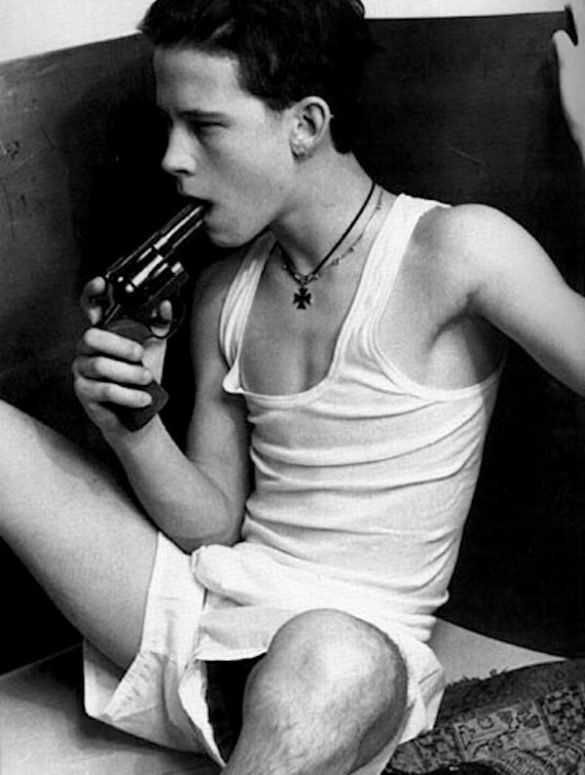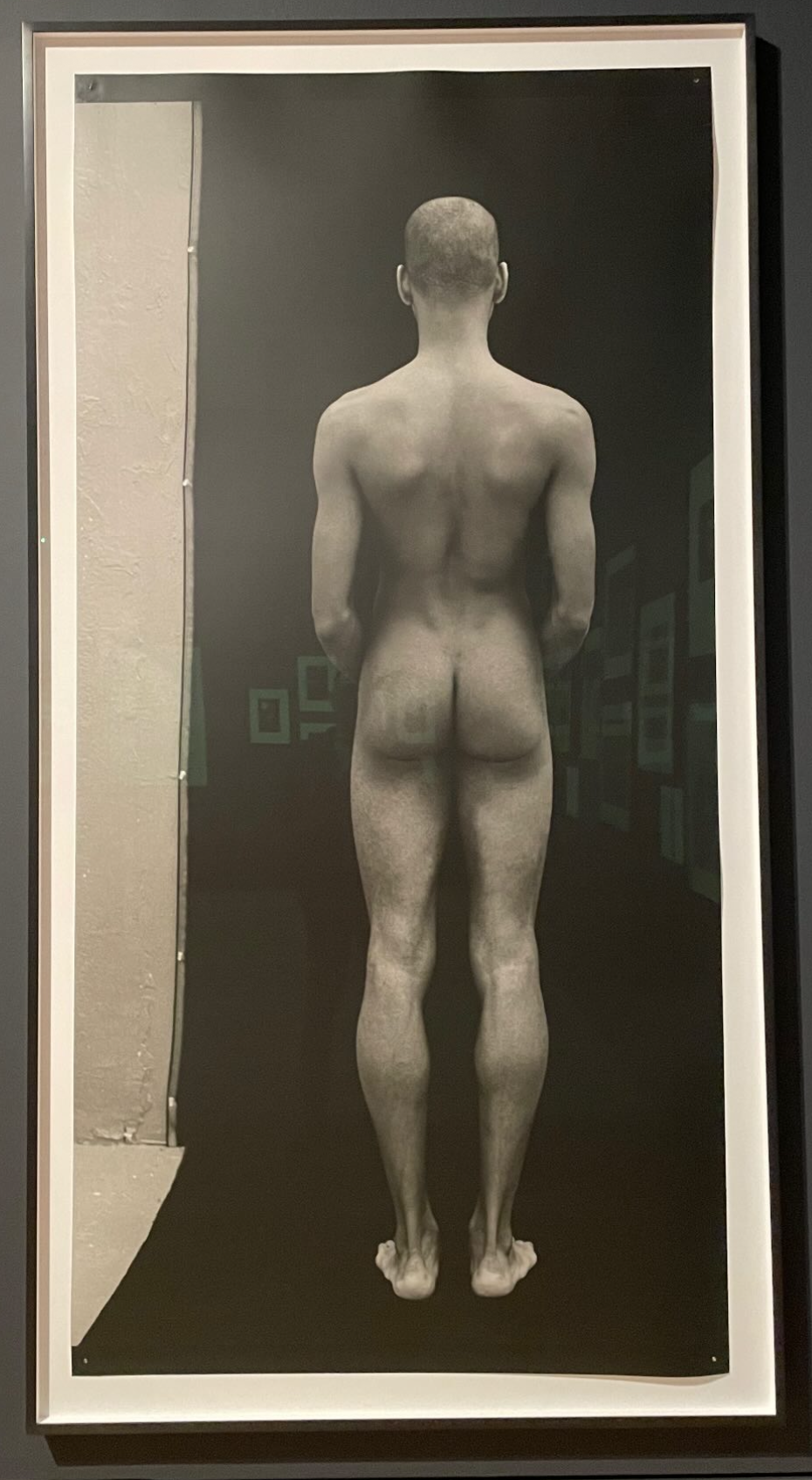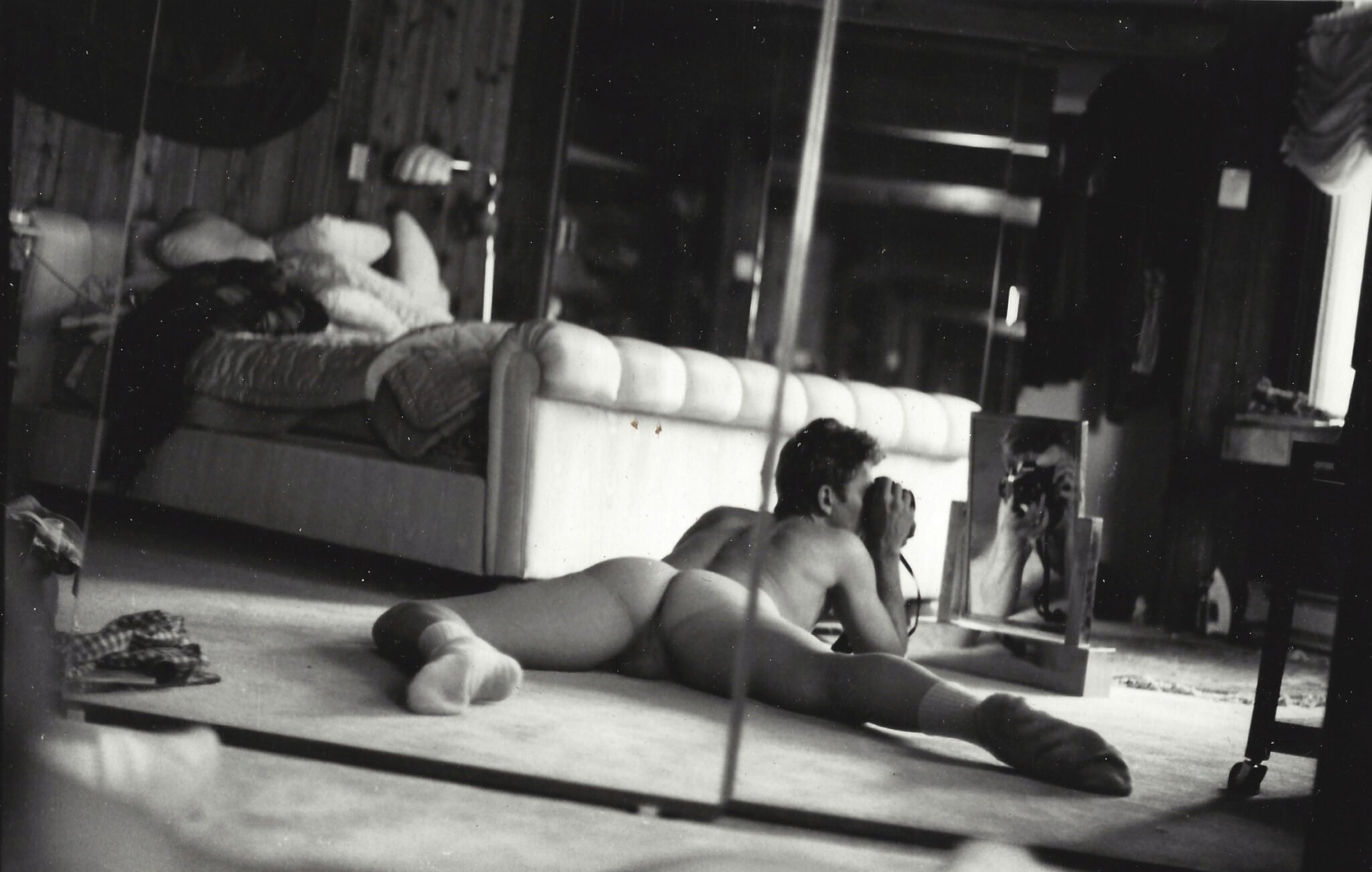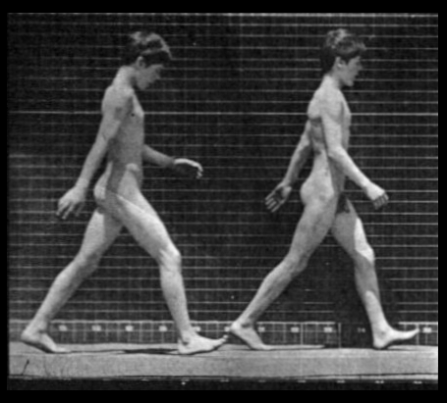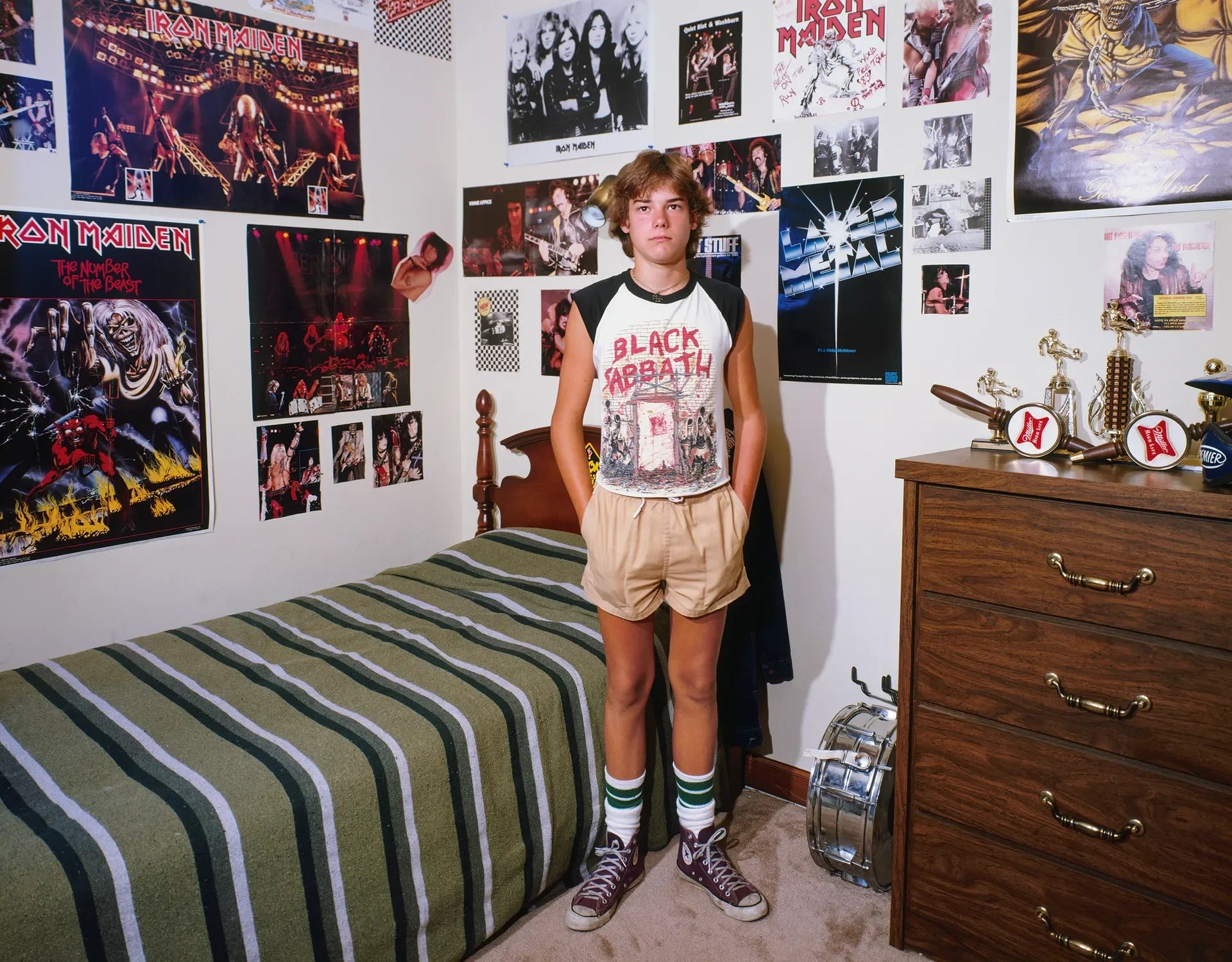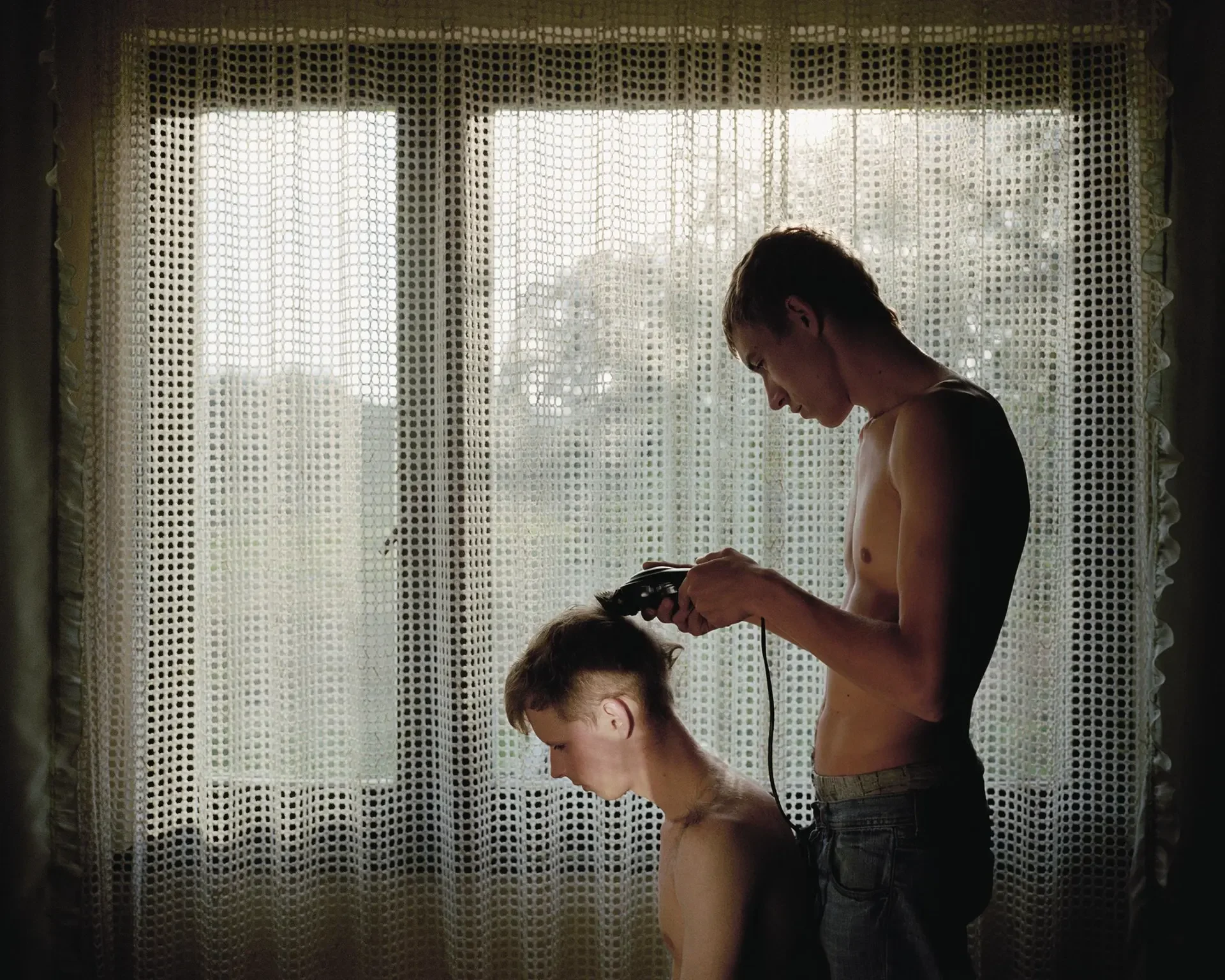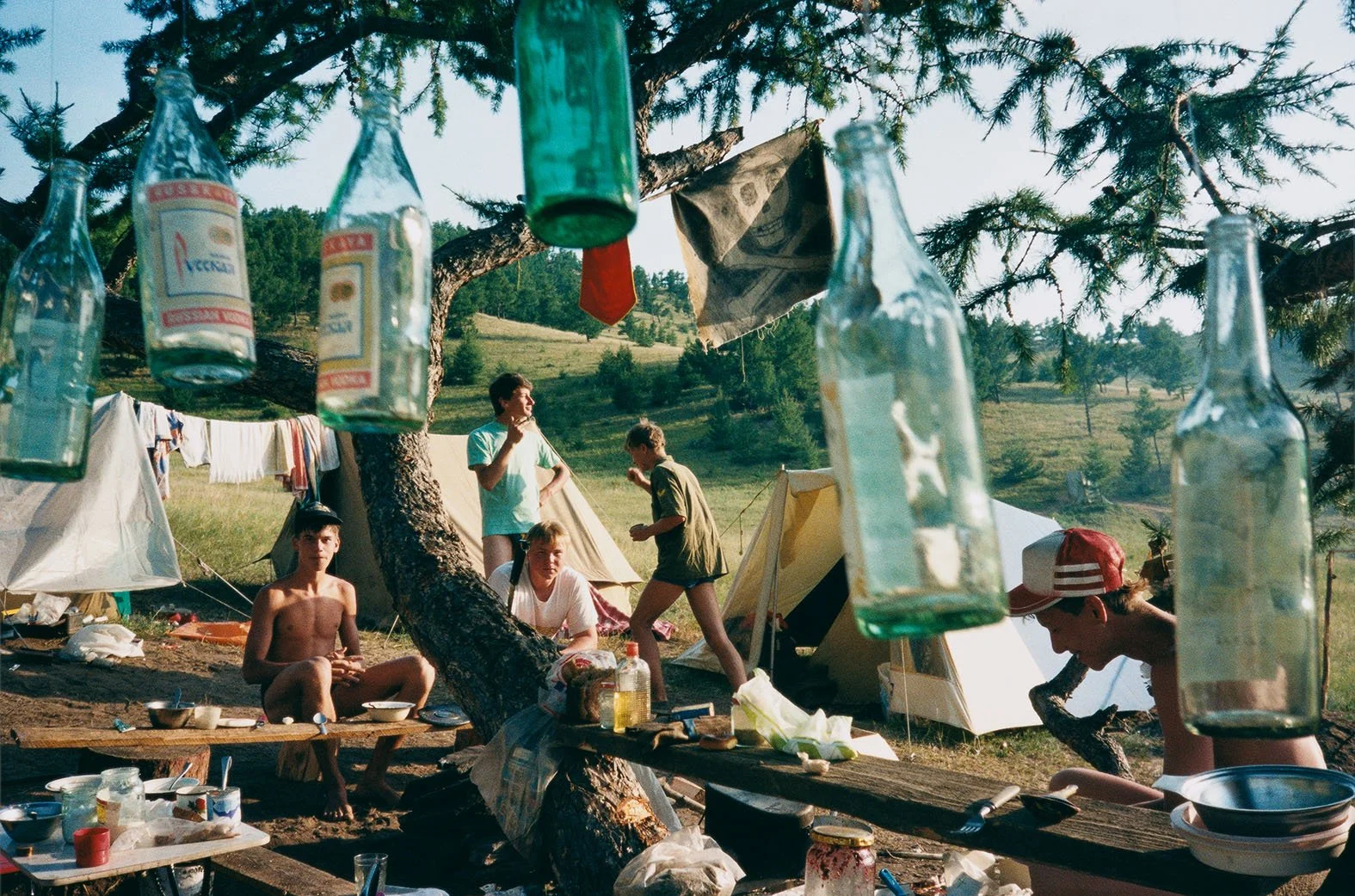Patrick Wack. Azov Horizons. 2029.ongoing.
"Summer 2023. Ukraine. Young Ukrainians jump into the Black Sea from a pier in Odessa..".
Konrad Helbig, Ragazzi Sicily, 1950s
There was a time when the poor were simply that, poor and not petty bourgeois. Some poor people had the privilege of being able to live outside the moral restrictions adopted by the lower and middle bourgeoisie imposed to control them by those at the top of society. Perhaps for this reason, the rich tended to have freer artistic connections with the poor than with the bourgeois trapped by the servitude and aspirations that society imposed on them. Today things are different, and almost all the poor, except the most marginalized, who rarely have the good fortune to directly experience the vital experience of knowing art, combine the worst of both worlds: an uncomfortable life due to lack of resources and an aspirational submission to those who impose social morality on others. Probably, for this reason certain freedoms that in the past allowed us to capture youth, nudity and intimacy as Helbing and others did, are no longer possible in the same way. Any space or relationship of this type today must be protected by a much more demanding duty of secrecy. Today there is a paradox that many people share pornography of themselves online for money, but they are afraid to open the door to a casual and aimless intimacy that only exists when there is the innocence that only freedom grants and that was taken away from them by the same morality that already dominated the bourgeoisie.
Ian David Baker.
A vintage photograph of a shirtless young man holding a broom. Voinquel ((1912-1994) was an important French photographer known for his many studies of young men and his portrayals of Jean Marais and others involved in the movies of Jean Cocteau.
Vincenzo Galdi. Intimate Men. 1900.
Galdi was an Italian model and photographer and is recognised as a pioneer in Italian erotic photography. A descendant of Italian aristocracy, he developed an interest in photography whilst studying at the Institute of Fine Arts Naples. In 1886, he started to assist and collaborate with German photographer Guglielmo Plüschow, who at that time had a studio in Naples. Galdi also modeled for Plüschow. He also worked in theater as a set designer. Moving to Rome in 1890, the partnership lasted until 1902, when Galdi set up his own studio in Rome.
Collier Schorr. German Hair Now! Vol. lV Forests & Fields
"In the nineteen seventies, photographer Esaias Baitel lived in France, in the Parisian suburb of Aubervilliers, for five years, which, among other things, resulted in a book and an exhibition that has toured the world. Zonen describes a neighborhood where motor bikes, rock and roll, and swastikas go hand in hand. In order to get close to these (Rockers), Esaias had to tell them that he was a Swede of Walloon origin. To introduce himself as a Jew in this environment would not have been cool. The photos do not show lost or mislead youths, but take us very close to a integrated subculture, with entire families and small children. / There are a lot of films and documentaries about the problems that immigrants encounter in France. Here we get to see the pictures of the other side. Confrontations are not hard to imagine.".
Pieter Kes haying in Marken, a Dutch village famed for its surviving folkways, c. 1943, on the eve of the “Hunger Winter” of 1944–45. On his torso he wears a woolen “middle” or “health,” which provided support for the lower back and, in cooler seasons, kept the wearer warm. Photo by Hans van Beelen.
"Throughout the years of 2000-2003 the artist Nicolai Howalt followed young Danish boys boxing their first match. Through double portraits before and after the match, Howalt conveys boyhood, puberty and the loss of innocence. Within the scope of boxing, Howalt examines the personal fight between fear and courage, dream and reality, boy and man. In the boxing ring, the boys are left to themselves, being on their own for the first time. Photographing them before and after their first match becomes an exploration of the tantalizing moments in a young man’s life, and thus an exploration of adolescence and rites de passage..".
Eadweard Muybridge. Animal Locomotion.
Folio’ is a collection of photographs illustrating the origins of Viviane Sassen’s visual language. All of the images presented in this book were taken in the mid-1990s, at the outset of her career as a photographer. With a spontaneous and personal approach, Sassen takes her immediate surroundings and environment as her preferred subjects. These images reflect a taste for staging, framing, and perspective that she developed early on. Such stylistic tools continue to allow her to incarnate the strange and even disturbing aspects at the heart of everything we deem familiar. In her texts, she reveals herself just as she does in her photographs, by weaving dreams with reality.
Patrick Wack. Azov Horizons. 2029.ongoing.
"Summer 2023. Ukraine. Young Ukrainians jump into the Black Sea from a pier in Odessa..".
Image from work Let’s sit down before we go. Born in 1942, Bertien van Manen began her career in the 1970s as a fashion photographer. Commercial photography, however, soon left her wanting and unfulfilled; like many photographers of her generation, inspired by Robert Frank’s The Americans (1958), she subsequently shifted toward an expressive and intimate documentary approach. Some of her earliest work addressed the lives of immigrant women in her home country, the Netherlands, and the curiosity that motivated that work prompted her to explore communities all over the world, from bootleggers in Appalachia to villagers in the former Soviet Union, for books including A hundred summers, a hundred winters (1994); East Wind West Wind (2001); Let’s sit down before we go (2011); Easter and Oak Trees (2013); and Moonshine (2014). Her photographs, made on trips throughout Eastern Europe, Russia, Asia, the United States, and, most recently, Ireland, often focus on the human experience of undertaking a journey.








